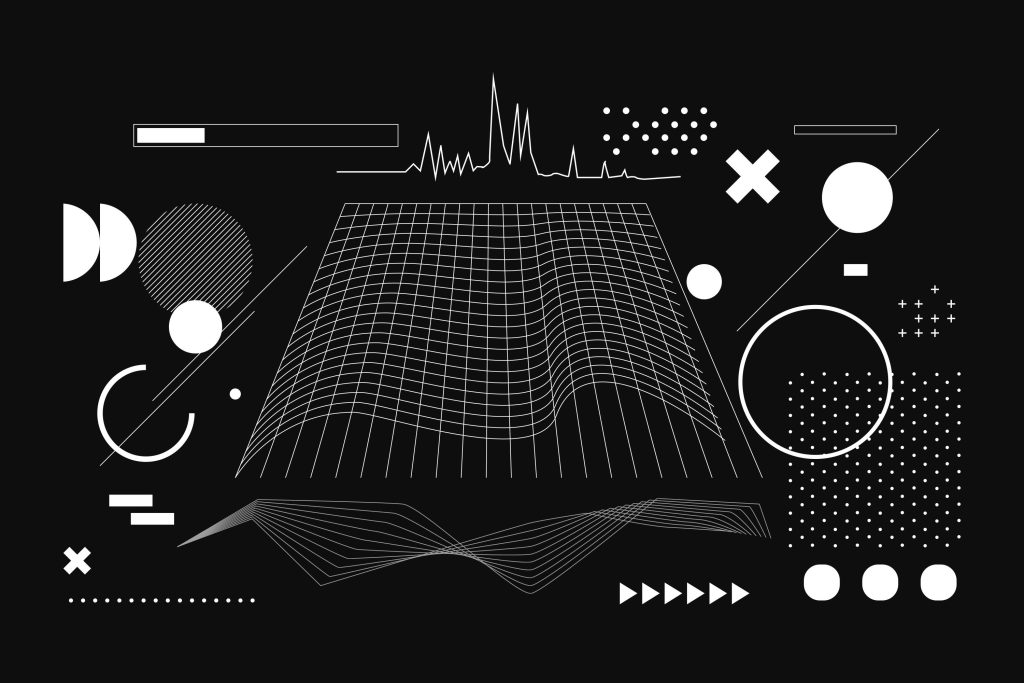In the dynamic world of streaming platforms, UI/UX design serves as the cornerstone for shaping viewer engagement. This design framework not only guides users through the selection process but also ensures a seamless playback experience. Yet, among the myriad factors that influence design effectiveness, color often gets overlooked. However, according to research, color alone forms 60-90% of a consumer’s initial impression. Hence, incorporating color psychology in UI/UX becomes essential. This practice dives deep into the emotional and psychological reactions triggered by various hues, offering designers a powerful tool to amplify user interaction. By actively applying principles of color psychology in UI/UX design, professionals can craft interfaces that not only captivate viewers but also resonate emotionally. This resonant connection, in turn, can significantly boost user engagement and enhance the overall experience on streaming platforms.
What is Color Psychology?
Color psychology serves as a pivotal element in the landscape of UI/UX design. This scientific discipline explores the ways in which colors actively shape human emotions and behaviors. Originating in ancient civilizations, the field has since been refined through rigorous scientific study. Today, it’s far more than an aesthetic consideration; it’s a psychological trigger. Colors such as red often ignite feelings of excitement or passion, while hues like blue generally induce a sense of calmness or serenity.
Transitioning to the digital realm, Color Psychology in UI/UX takes on an elevated role, influencing not only how users perceive an interface but also how they interact with it. For instance, a well-placed splash of red could encourage users to click the “Subscribe” button, thereby driving conversions. On the other hand, a soothing blue background could make users feel more comfortable, thus increasing retention rates. Consequently, understanding and implementing color psychology is not just an art; it’s a strategic imperative for any UI/UX designer looking to maximize user engagement and emotional impact.
By mastering the nuances of color psychology, professionals in UI/UX can engineer more effective, emotionally resonant user experiences. In a saturated market, this knowledge serves as a vital differentiator, enabling designers to create interfaces that not only attract but also retain users.
Why Color Psychology Matters in UI/UX Design
In today’s digital landscape, user engagement reigns supreme, and color psychology in UI/UX design serves as a crucial facilitator for that engagement. Rather than merely acting as a decorative element, color serves a communicative role. It explicitly signals actions, guiding users toward certain behaviors like subscribing, playing a video, or exploring more content. Furthermore, the appropriate use of color elicits specific emotional responses that can amplify the impact of these actions.
Drawing upon a rich body of research, industry leaders like Netflix and Hulu have strategically employed color psychology to their advantage. By carefully selecting their color schemes, these platforms not only enhance the aesthetic appeal but also significantly influence user behavior and emotional engagement. For instance, the choice of a red call-to-action button against a dark background can invigorate users to click, while softer hues may offer a more relaxing viewing experience that encourages longer sessions.
So, when we consider the role of color psychology in UI/UX design, we’re not simply talking about aesthetics; we’re talking about a potent tool that can drive user engagement, elevate emotional responses, and ultimately contribute to business metrics like user retention and conversion rates. As thought leaders in this space, we recognize that mastering this aspect of design is not optional; it’s a necessity for competitive advantage.
Key Color Schemes and Their Psychological Impact
Warm Colors (Red, Orange, Yellow)
Let’s kick things off with warm colors, shall we? Think reds, oranges, and yellows—the kind of hues that make you think of sunlight and energy. In the world of color psychology in UI/UX, these are your go-to shades for getting people to sit up and take notice. Perfect for those “Play Now” or “Subscribe” buttons that you really want to pop. But here’s a pro tip: don’t go overboard. Too much of a good thing can overwhelm your users, and we don’t want that, do we?
Cool Colors (Blue, Green, Purple)
Now, let’s switch gears and move over to the cool colors like blue, green, and purple. Imagine a calm sea or a peaceful forest; that’s the kind of mood these colors set. They’re great for creating a balanced and focused environment, just like how Netflix uses black to mellow out its striking red elements. If you want to keep your viewers relaxed and engaged, these colors are your best buddies.
Neutral Colors (Black, White, Grey)
Last but not least, let’s talk neutrals. They might not be as eye-catching as a bold red or calming as a soft blue, but don’t underestimate the power of a good neutral. Blacks, whites, and greys are the unsung heroes that make other colors stand out. They’re super versatile—great for backgrounds, text, or even to break up space. And when it comes to readability and easy navigation, neutrals are your fail-safe option.
So, to wrap it up, understanding the impact of warm, cool, and neutral colors isn’t just about making things look pretty. It’s about strategically tapping into emotions to make your user’s experience as engaging as possible. So the next time you’re working on a streaming platform, remember: the right color can make all the difference.
Practical Tips for Applying Color Psychology in UI/UX
Firstly, it’s imperative to identify the emotional needs and preferences of your target demographic. Tailoring your color choices based on this insight can be the difference between a fleeting interaction and sustained engagement. Remember, Color Psychology in UI/UX is not a one-size-fits-all strategy.
Secondly, ensure brand consistency across all touchpoints. Colors do more than elicit emotions; they also reinforce brand identity. From your logo to your streaming interface, a unified color scheme creates a seamless, professional experience for the user. When colors align with your brand’s core message, they bolster the emotional impact aimed at the viewer.
Lastly, prioritize accessibility in your design strategy. Color blindness affects approximately 1 in 12 men and 1 in 200 women worldwide. Designing with this in mind doesn’t just cater to an inclusive audience, but also enriches the user experience for all. Tools like contrast checkers and simulators can help adapt your palette to be more accessible.
Mistakes to Avoid in Applying Color Psychology
Navigating the realm of Color Psychology in UI/UX requires a meticulous approach. Firstly, one must resist the temptation to excessively utilize vibrant colors. While they might seem enticing and attention-grabbing, their overuse can quickly lead to visual fatigue among users. Moreover, transitioning from one color scheme to another, it’s pivotal to remain culturally sensitive. Color perceptions can differ drastically across regions and cultures, and overlooking this fact can alienate a significant portion of your audience. Another often overlooked aspect, especially when eager to launch, is bypassing the essential step of A/B testing. Without this, you’re essentially walking blind, not fully understanding how different color choices impact user behavior. Consequently, bypassing A/B testing can deprive your platform of essential insights and optimal user experience opportunities. By sidestepping these pitfalls, designers can truly harness the emotional and behavioral potentials embedded in color choices.
Conslusion
In the evolving landscape of digital platforms, Color Psychology in UI/UX stands as a formidable tool, often waiting in the wings, ready to be harnessed fully. It’s not just about hues and tones; it’s about engaging users emotionally, subtly guiding their actions, and carving a niche in their digital experience. Drawing from insights into warm colors that inspire energy and action, cool colors that provide the calming balance, and neutral colors that ensure readability and contrast, designers can craft user experiences that resonate. Moreover, practical application, rooted in understanding target demographics and ensuring accessibility, can significantly uplift user engagement metrics. Notably, industry behemoths like Disney+ and Amazon Prime have effectively wielded this tool, setting benchmarks for others to follow. However, as with all powerful tools, there are pitfalls. Avoiding over-saturation and understanding cultural nuances can make all the difference. As platforms continuously compete for user attention, integrating color psychology in UI/UX design isn’t just an advantage; it’s becoming an imperative.






